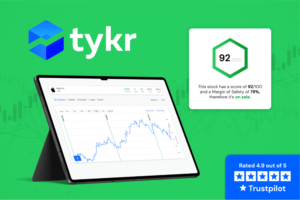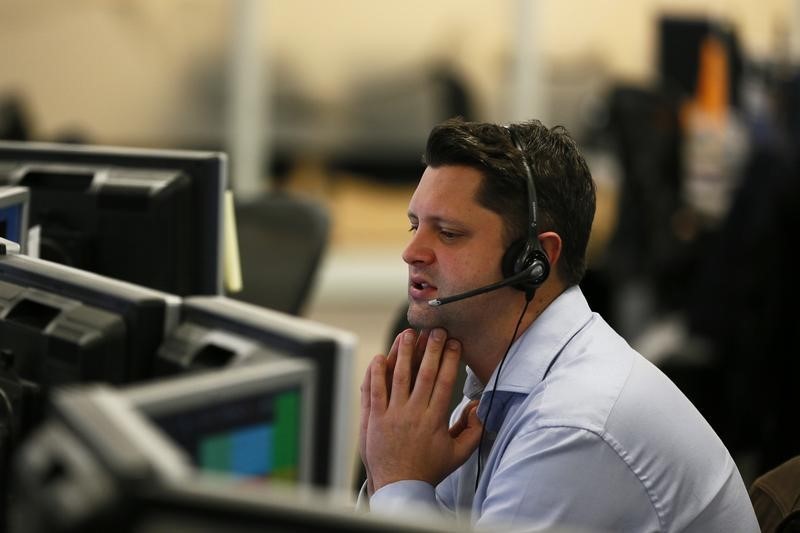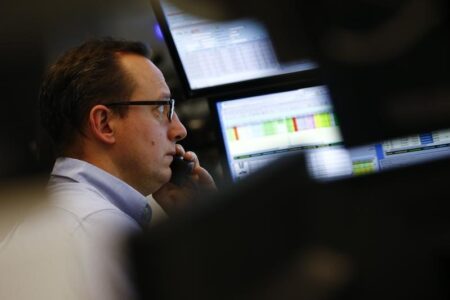© Reuters.
Azimut Holding has announced during its earnings call that it has met its full-year 2023 targets, maintaining a consistent growth trajectory for the fourth consecutive year. The company reported a net profit of €597 million ($1 = €0.91) and proposed a dividend of €1.4 per share for 2023.
The dividend distribution plan includes €1 per share in cash and €0.40 in shares, with the share amount based on the March 6th closing price. Azimut Holding, which trades under the ticker AZM, also confirmed its financial targets for 2024, including a net interest target of over €7 billion and a net profit goal of €500 million.
Key Takeaways
- Azimut Holding met its annual interest and net profit targets for the fourth consecutive year.
- The company’s assets have grown on average by 12% over the past five years, reaching €90.8 billion at the end of 2023.
- A proposed dividend of €1.4 per share for 2023, with a payout comprising €1 in cash and €0.40 in shares.
- Azimut Holding aims to achieve a net interest of over €7 billion and a net profit of €500 million by the end of 2024.
- The company is exploring M&A opportunities in Australia and the U.S. and plans to repay a €500 million bond by the end of 2024.
Company Outlook
- Azimut Holding is targeting a 15% AUM growth in private markets by the end of 2024.
- The company is working to improve profitability in international markets, aiming for a €150 million annualized run rate by December 2024.
- There are ongoing discussions for deals with new investors in key foreign markets to unlock value in strategic investments.
Bearish Highlights
- Total costs have increased by 7%, although this is in line with the company’s guidance.
- International markets are facing challenges due to investments and changes in the perimeter impacting EBITDA.
Bullish Highlights
- The company’s private market initiative saw assets grow 14x to €8.1 billion.
- Net average performance for clients stood at 12%.
- Recurring net profit reached €389 million, doubling since 2019.
Misses
- There was no mention of misses in the provided context.
Q&A Highlights
- The company discussed the reduction of the cash component in the dividend distribution and its tax rate.
- Azimut Holding addressed the impact of Nova on profitability and costs, stating no extraordinary costs are expected.
- The company expects a 50 basis point net profit contribution from Nova, with details on the service fee and net result of the partnership remaining confidential.
Azimut Holding has successfully achieved its financial targets, demonstrating robust growth in its asset base and profitability. The company’s focus on diversifying its fee structure towards recurring revenues and its strategic initiatives in the private market and fintech sectors have contributed to its positive performance. With plans to consolidate inflows from its partnership with UniCredit through Nova Investment Management and potential M&A deals in the pipeline, Azimut Holding is positioning itself for continued success in the upcoming year. The company’s commitment to shareholder returns is underscored by its dividend proposal and strategic capital management. As Azimut Holding navigates the complexities of international expansion and industry regulations like IFRS 17, it remains focused on maintaining its growth trajectory and achieving its ambitious targets for 2024.
Full transcript – None (AZIHF) Q4 2023:
Operator: Good afternoon. This is the Chorus Call conference operator. Welcome, and thank you for joining the Azimut Holding Full Year 2023 Results Conference Call. As a reminder, all participants are in a listen-only mode. After the presentation, there will be an opportunity to ask questions [Operator Instructions] At this time, I would like to turn the conference over to Mr. Gabriele Blei, CEO of Azimut Holdings. Please go ahead, sir.
Gabriele Blei: Thank you very much and good afternoon to everyone. As always, we’ll go through the slides as quickly as we can, and I’ll leave as much possible for Q&A. If we start and jump to Slide number 4. We have summarized what has been achieved by the company in the last four years in terms of delivery of every target. This is also based on a history, which is slightly longer, which means that in the last 20 years, the company since being listed has always delivered on its targets. In these last four years, we have set a specific annual target of interest and net profit, and we are happy to say we have always delivered them accordingly. Turning to Slide number 5. We have a deep dive into the key metrics of the five past years, and you can see how assets has increased on average by 12%, thanks also to €43 billion of cumulated net inflows in the same period. We are very happy on the development of our private market initiative since the beginning of this venture assets have grown 14x to €8.1 billion and increasing in the coming months. As far as clients are concerned, the weighted net average of performance, i.e., net of cost is 12%, if not more during a period which we experienced still some years of negative interest rates and then a normalization effects that came out from Central Bank with increasing rates and training of the liquidity. As far as net profit is concerned, €2.2 billion of cumulated net profit in the five years and a dividend of €825 million, the latest one is a proposal of €1.4 per share as far as 2023 is concerned. Moving on, not much to say on Slide number 6. Average assets have increased 7% year-on-year. This is a number that will help us in understanding the development also of the revenues going forward. Turning to Slide number 7, net flows as we have commented in the last couple of quarters during 2023. As far as ELTIF is concerned, we have had the issue with one institutional client that has drained significant flows out of money market products and a network that has been able to overcome and offset completely this outlook. If we look into the foreign expansion as far as EMEA is concerned, we would like to point out a good development of the flows out of Turkey for €1.1 billion and Monaco for €290 million, thanks to the hiring of some private bankers. Looking to Asia Pacific, Australia has been the dominant player down there with €1.9 billion of net flows in the year, of which €1.2 billion coming from M&A, which you can see in the column to the right. Moving to the Americas, U.S., €3.7 billion of flows, of which €1.3 billion is related to the acquisition of Kennedy Capital Management at the mid-February 2023. And then a development which has been quite positive for Mexico with more than €450 million of net flows, which is partly offset from the outflows that we have discussed during 2023 as far as Brazil is concerned, which has been inverted from August to December, 2023 following the turning point we observed during the summer. €6.9 billion the total AUM, which we concluded in 2023. Moving to Slide number 8. Assets had reached €90.8 billion at the end of 2023. In terms of geographical split, I have to say there is not much any difference between the full year and the nine months. So I won’t spend any time. As far as February is concerned, 2024, as we announced this morning together with the press release of the full year results, we have collected in the two months of 2024 €860 million and assets have reached €93.7 billion. Moving to Slide number 9. This is something that we have also discussed several times in the past since the changes in the fee pricing to our Luximo-based fund. We were pointing out how we were moving from a situation in which volatility and performance-related revenues would have diminished over time. And effectively, this is the second year in a row where you can see that the bulk of the revenues is coming from recurring revenues, whereas performance fees component is a vast minority. And this is something we think will be with us and will stay with us also in the coming years. Moving to the deep dive of the results in the full year 2023. We start with the revenues. We have closed the year with €1.3 billion revenues, of which 138 million of recurring revenues development of 8% year-over-year. As far as the variable fees, €18 million compared to €46 million and insurance fees of 111 million in full year 2023. If we try to explain the development year-over-year recurring fees, there is an increase of €84 million, net of Santry, of course, of which this is equally speed between Italy and the foreign business. As far as Italy is concerned, €32 million comes from the new distribution or the new fee structure, whereas private market and organic growth amount to more than €11 million. If I look at the foreign operations of the €40-ish million linked to the increase year-over-year of the current fees, €24 million is explained by the new perimeter out of Australia, where we have completed several acquisitions during 2023. And the rest being €19 million of organic growth as far as recurring revenue is concerned, with a notable countries of, not to mention, 37 million and Brazil, the private markets related development of €4 million development in full year 2023. Moving to performance fees. As it is mentioned in the slide, the footprint had a negative contribution of €16 million over 2023, which has been offset by the good performance coming from our discretionary portfolio out of Italy for €14 million. And the Middle East, so Turkey, Egypt has contributed for €15 million of performance fees. If I look at the debt coming from the insurance revenue line, which is €50 million or, if you prefer, €18 million net of the restatement of the IFRS 17, this is explained by the performance fee element for almost €15 million and then the recurring business growth, which has increased by €4 million. As far as the other revenue line, the development is mainly driven by the development and activities of our corporate and investment banking business for roughly speaking, €4 million. Moving to the cost side. We closed the year with $725 million of total cost, a development increase of 7%, which is roughly speaking in line with the guidelines that we had given at the beginning of the year. If we want to deep dive as well on the distribution cost, there is an increase year-over-year of €30 million, of which €12 million is related to some severance payments to Italian FAs, and this is something we had commented several times in the past, that we were benefiting in the past from a smaller contribution coming from the yield curve, whereas when this stabilizes, there is the inversion and this is what we have seen over 2023. Moving to the variable compensation in our two assays in selected countries abroad. This accounts for €6 million increase year-over-year, whereas in terms of lower rebates and other elements within the distribution cost, there is a saving of €6 million year-over-year. SG&A line, an increase of BRL 46 million, of which, if you prefer, restated for the IFRS 17. Once again, there is a difference of €44 million year-over-year, of which €38 million is explained by our foreign business, which we can break down further into new perimeter out of Australia, €19 million and organic growth for €90 million. As far as Italy is concerned, there is an increase year-over-year of €5 million of which the bulk is the new perimeter. So there is a good flat development of the underlying business in Italy. D&A and provisions, we had the release of several aspects during the year, which produced a saving year-over-year. As you can see, we have broken down also on the slide, the bulk of the distribution costs related to Italy and international as well as SG&A, and you can see how the vast majority, 91% of distribution cost belongs to Italy, whereas this is equally split or almost liquidly split when we look at SG&A. Moving to Slide number 12, EBIT margin, not much to say. We have continued on the trend that we observed during the last couple of years. There is a good development in the recurring margin, which has increased steadily from 20% in 2014 up to 43% in 2015. If we go at an EBIT level and net profit on Slide 13, we have maintained a very good and solid profitability level with 45% EBIT margin and then increase in the EBIT of €597 million. For your reference, we have broken down the finance income line to give you more light on what’s in there. As you can see, there is the dividend contribution of which the vast majority, €60 million comes from our U.S. GP staking business and coming capital. Then we have the realized and underlying gains on our investments, which accounts for €37 million, and then some net interest charges for €7 million, given the returns we earn on our cash. At an adjusted net profit level, bottom of the slide, we closed the year with €554 million. We are simply adjusting full year 2023 to neutralize the effect of the tax settlement, which we discussed last year for €19 million and the IFRS 17 impact which is negligible given a more conservative approach that we have taken and we have developed over the course of the last quarters. As far as margins are concerned, we closed the year with 53 basis points of net profit margin at an adjusted basis, a 5-basis point improvement vis-à-vis the year before. Moving to Slide 14. This is another way of looking at things, and this is something on which we base our dividend policy, as you know. We reached €389 million of recurring net profit 2x the level of 2019 and the highest in the firm’s history. And based on this number, we have decided to pay out 50% dividend in line with our policy and which we will discuss later. In the next three, four slides, we have broken down what we were showing to you in terms of the four verticals. We have preferred to split this into different slides in order to give you a better picture and more details. As you can see, there is quite a stable average AUM out of Italy, while we are benefiting from growth in terms of international and product markets. Slide 16 on the revenue line reserve stability in Italy with very solid margins, whereas we are growing both internationally as well as private markets with the latter with a very interesting margin profile, which we are very happy to achieve last but not least, the Fintech world is contributing nicely in terms of revenues, and we expect this to continue in the future. Moving to the EBITDA vertical. As you can see, Italy is benefiting from the lower variable cost and some other cost containing measures and still expressed a 49% EBIT margin. International, we are discounting some investment and changing perimeter that distorted a bit the picture, which will normalize on a run rate basis as we go forward, assuming no further addition in terms of M&A and so on. Private markets as well, a good evolution consider that in the private market, we do have a bit of a distortion here due to some costs linked to our U.S. presence that are recognized about EBIT, whereas some earnings come below EBIT, but we’ll see this adjustment as we move to the next slide. In terms of net profit, as you can see, cloud markets still runs with a 59 basis points margin. Italy stands at 79 net profit margin also thanks to the unrealized and realized gains on our own investments and our international business is rather stable in terms of margins, and there is a growth in the net profit, which is not as strong as one would expect on a year-on-year comparison, but there has been some effect due to the Santry reconsolidation which occurred last year. Moving to the business update. As you know, on Slide 20, we have completed during the course of Q4, the setup of Nova Investment Management. So the structure is fully compliant, operational with funds approved and launched. There are 12 usage funds that have been authorized as of 28th of December. Four funds have already been actively distributed on the UniCredit 1 market platform, and you can see the names and the details of these four funds. Three more are in the IPO phase, and we expect or better UniCredit expect to complete this pace during the month of March. And then the other four, five funds will complete the offering that, as I mentioned, is composed of 12 Luximo funds. As you can imagine, initially, these products, and as we have mentioned in the past, will be managed, thanks to the capabilities Delight Global Team. And over time, Novo will become independent in terms of investment management capabilities. Moving to Slide 21. As we have had the chance to discuss in some occasions, starting from 1st January 2024, we will begin to consolidate the inflows that Nova will generate. This is going to go forward into the funds line of our monthly update that you typically receive. As far as the accounting treatment instead, this is the earnings streams coming from this partnership fall within the IFRS 10 and this principle is quite articulated in terms of control of an entity and the impact of the consolidation that we have to take into account. We can discuss certainly this later. But effectively, what it will produce is that we will account for a service fee in the recurring revenue line. And then there is going to be another component below the operating profit line in the finance income coming from the partnership. All in all, the element of these two components of fees or income will contribute to the bottom line for an average 50 basis points, which is what we have stated during the course of 2023. Moving to Slide number 22. There is the usual picture of the performance net to customers, net of our cost, which is roughly speaking, 20% over the last four years and in excess of 80 to 100 basis points vis-a-vis the industry. Not much to say on Slide 23, there is the usual snapshot of our breakdown of the funds of the Luxembourg based funds, whereas on Slide 24, you can see a focus on our Italian client base. This is something we have mentioned several times in our discussion and conversation with you, but we wanted to provide you the details of the number here where we show that clients that normally invest more than €500,000 with us have increased over time, reaching almost 60%. Another way of looking at things in Italy is the average total assets under management of financial advisers and wealth manager on Slide 25. And you can see how this has developed over time from 2019 to 2023 for the different categories of bankers and financial advisers. Clearly, one thing that is interesting to note, which we tend to stress quite a lot also in our internal conversation with advisers and managers in the network is the fact that teams when they group and they work together, they tend to control more assets and develop more quickly their asset base. Slide 26. This is the usual snapshot as we mentioned, €8.1 billion with Italy being the largest market than the U.S. with our GP staking business. And last but not least, Brazil, which is really developing its expertise in the private market segment more than 70 products and 13.3% of the assets, which is well on track to achieve our 15% target. Slide 27, the usual snapshot, no big change. I just want to mention here that the private debt has slightly decreased in favor of real assets, thanks to some closing that we had on our infrastructure funds. ESG update, something that we take a lot of attention especially internally and in managing our products. We have set up an additional team to basically coordinate all the different aspects of the business when it comes to ESG. This is built with very solid competencies and people that have been working with Azimut and within the group for a very long period of time. On the right-hand side of the slide, instead, you see how there has been a development in the asset base with funds that are Article 8 or 8 plus that have grown two times from €7 billion to €14 ill in the last four years. And of that, we can mention that almost 30% of the recurring revenues that the group generates are coming from these fund. I will leave now the floor to Alessandro for the full year financials.
Alessandro Zambotti: Thank you, Gabriele. As we already provided you with a deep dive of the full year ’23 numbers, I will focus on the last quarter FY of the 2023. In particular, as you can see from the Slide 30, total revenue increased by €25 million. The operating cost increased by €14 million with a net result of the operating profit that increased by €11 million. As you can see in call we also note the recurring fees decreased by €3.7 million. This is impacted by a mix effect of the asset allocation end as well as a lag due to parent market location. On variable fees, we have a positive contribution on the quarter of €22.5 million compared to the negative amount of the third quarter. This is thanks to the positive performance of the individual management portfolio, but as well also the positive contribution from the international business, in particular, in Turkey. Again, on the other income, €3 million more compared to the last quarter, and this is explained by a positive contribution that improved, particularly in the last quarter from the new lending activities from what we call the investment banking. Insurance revenue is slightly below the result of the third quarter, €1.3 million less, and this is due to lower performance fees compared to the previous quarter and also it’s as well a slightly below results from the recurring fees. In terms of cost, so distribution cost increased by €10 million. Here, again, following the note, we have a higher severance payment to the Italian financial adviser linked to the Hilco. And as well, we had higher variable compensation to the financial adviser from the international business, thanks to the great results that we reached during the year. On personnel and SG&A, also considering we have an increase of €6 million compared to the third quarter, but as well, we have less cost from the depreciation and amortization. And again, here, we have a combination of over the effect coming from additional and variable compensation on our portfolio manager global team and as well as the release of up vision on a legal case that we conclude positively, therefore, we recover. In general, we can see a stable operating margin of 45% and 3 basis points less if we focus on the difference between third quarter and fourth quarter. Moving to next slide. We have the second part of the P&L, probably may fail to consider the negative contribution of the finance income of almost €6 million negative. This is including the reverse of the positive effect of the IFRS 17 that was impacting positively in the previous quarter. And this negative effect of the reversal has been offset by dividends from our partnership, by million and also the positive interest rate that we earn from our liquidity. We are almost flat on the nonoperating costs and the financial expenses. So in general, also look into the last, let’s say, line of the P&L. So considering the net profit adjusted because we have the reversal of the €10 million from the IFRS, let’s say that the difference is not so significant compared to the last quarter. Moving to next slide. So looking to the net financial position. We have €392 million positive, €100 million more compared to the last year. The variation could be reconciled on starting from the net profit before tax of €625 million, then we can take out the impact of the dividend, €224 million. The M&A activity is €182 million. And also, if we take out the effect of the payment of tax of €126 million, we reached €83 million of results that is almost €100 million of difference. I mean, simply consider that at the level of the finance income, we have also a positive effect as we said at the beginning, from no realized effect on the valuation, therefore, I mean, this set does not go to the cash. I’m going to leave to Gabriele.
Gabriele Blei: Thank you, Alessandro. Thank you very much. Capital management and returns, Slide number 33. As you have probably seen in the press release, we are proposing a dividend to the AGM for the AM approval of $1.4 per share. I just want to remind you that this is 50% of the entire payout of the recurring EPS, which is exactly within the boundaries of our dividend policy and implies a dividend yield of 5.1%. This comes in a year in which 2024 by December, we will repay €500 million of outstanding bonds, which is the last remaining bit that we have outstanding, which was taken out back in 2019. Moving to Slide 34 in of the €1.4 per share, we have decided to propose a €1 per share in cash and €0.40 in shares. The number of shares that will be dedicated to the dividends being set on the closing price of yesterday 6th of March and will not be adjusted upward or downward on the ex-dividend date. As you can appreciate, we do still see significant growth prospects for the group. We still believe that the stock is undervalued. And for this reason, all of us tied to Timone and locked up in the shareholders’ agreement are confident that the value of these shares will increase over time. Moving to the outlook. We are just summarizing the key targets and outlook. We confirm net interest for 2024 in excess of €7 billion, also thanks to several partnerships that we have and a €500 million net profit target for the end of 2024. Private markets, once again, we reiterate the 15% AUM target at the end of this year. And as far as international is concerned, we are aiming to improve further the profitability, especially from key markets and therefore, with the annualized cumulized run rate of the €150 million target by December 2024. As far as M&A is concerned, as we probably mentioned at a high-level basis during the last conference call, we are in the process of finalizing some deals with new investors in some key foreign markets. There are some very interesting discussions we are having. And this will lead to the unlock of substantial value in some of our strategic investments while remaining at the same time, invested in several of these ventures in order to benefit from future upside. Lastly, as we just mentioned, the repayment of the €500 million bond, which concludes our presentation. Thank you very much, and we are happy to take any questions.
Operator: [Operator Instructions] The first question is from Lam, Hubert for Bank of America.
Hubert Lam: I’ve got three of them. Firstly, Gabriele, can you elaborate more about what you said about the M&A? Where do you think you’re finalizing deals with investors to unlock value? I’m just wondering what specifically you mean by this? And what would have involved as it sounds quite interesting. That’s the first question. The second question is on NOVA. Thank you for the update on that. Can you quantify how much Nova contributed to both the January and February flows? February flows were pretty good. I’m just wondering how much of that was driven by NOVA, if any at all? And last question is on the fee margin, which fell, I think, quite a little more than expected in Q4. I was wondering if you could explain a bit what drove that and how you expect the margins to be from that level in the first quarter and into 2024?
Gabriele Blei: Thank you, Hubert. Sure. So I’ll start backwards from the fee margin fall. What we have recorded in Q4 is a slight erosion of 3 basis points vis-à-vis third quarter. If you recall, on the third quarter 2023, the erosion has been 6 basis points. So roughly speaking, the erosion during 2023 has been of 9 basis points, which falls within, if you want, the boundary of the plus/minus 10, 15 basis points, we typically refer when it comes to potential impact on our fee margin due to asset allocation, market effects, et cetera, et cetera. So there has been a slight erosion. We don’t think this is an indication of any change vis-à-vis our commitment to clients to generate performance. And therefore, we are still believing that over time, this trend will be imported. Also, thanks to the fact that we are continuing our development in the private market segment, which, as you have seen in the slide, are contributing with significant margins to our revenues and consider there is always a bit of a time lag between the closing of a private market fund or a club deal and when they effectively start to generate fee margin. As far as Nova is concerned, I think I’ll try to answer in this way and this is very important for us given that the partnership with UniCredit started a year ago. It meant for us and for them, a lot of work during 2023 to make it possible. And now that we are starting to truly work together on the execution of this partnership, we will never want to create problems or anticipate a disclosure during a period in which they are in a potential negotiation phase with their existing provider of asset management services. So we have decided to respect the willingness to maintain a very conservative approach when it comes to providing a monthly update. And therefore, for the time being, we will stick to supporting them in the execution, which means raising assets which are coming through. And as you can expect, there is an element of education and training towards new products that the network has to digest and then there is the rollout of the full capability of asset gathering that UniCredit has on 7 million customers that we wouldn’t have been able to address. On the M&A, well, yes, I mean, we are at an interesting development of a couple of negotiation, which means in a fuel market, we have developed our presence. We have been able to establish a brand. The numbers are there for all of us to be satisfied and believe that in the future, we can do even more. But as we have argued several times, we can do more and quicker if we potentially enlarge the partnership to strategic industrial or financial investors. And therefore, we are in the process of trying to evaluate and assess some opportunities to print the value on a couple of our investments, which means that finally, also the market can appreciate the intrinsic value of some of our investments, while retaining a stake in order to continue to contribute to the growth of the project that we have developed over time as well as benefiting from future potential reevaluation vis-a-vis the print that we will be able to have today if these theses are going to be consumed. But I’m sure that we will be in a position to be a lot more clear in terms of rationale and numbers when effectively those transactions are going to be completed. And I’m sure in the coming quarters, we will be able to be in that position.
Operator: The next question is from Giovanni Razzoli with Deutsche Bank.
Giovanni Razzoli: Three questions which, one is on the dividend distribution. The other is on the tax rate and the third is on Nova. Can you elaborate, please, a bit more on your dividend distribution because I think that the market is a little surprised by the reduction of the cash component of the payment in favor of the distribution of treasury shares. If I’m not mistaken, the cash payout has been cut to 35%, more or less with the balance represented by the distribution of treasury shares. What is the last one for such a moment which in my U.S. cost the market a little bit of card? And shall we see this as a new standard for the coming years? So if I look at the €500 million of net profit for 2024, shall we assume that the cash component is going to remain unchanged vis-a-vis what we have just announced today? I understand the PSC is a little bit very early as a question. But from a strategic point of view, shall we look at the benchmark of cash payout as a new reference point for the future? The second question details on Slide 31 about the tax rate when you say that the booking of the performance fee resulted into a higher tax rate as they were recorded into high tax rate countries, my mistake, but I saw that performance fees would have been booked mostly in Luxembourg and Ireland. So I cannot reconcile your comments here as those countries should be with lower taxation or is my understanding wrong so there are other geographies where those performance we were booked? And the last point on the pipeline of product distribution on one market platform with Nova, I’m surprised to see that you do not expect to launch private market funds in that platform because clearly, you are, I would say, in Italy, for sure, the market leader for those products, you pioneered the launch of this asset class. So I would have expected to see also these products into the one market platform for UniCredit, I don’t see in this. Is there a rationale for this? Or should we expect something for the end of this year?
Gabriele Blei: Thank you, Giovanni. Also in this case, I’ll go backwards. As far as Nova is concerned, over time, it might be possible, but not at the beginning, meaning when we started the discussion and we envisage the partnership, we focused and we agreed to focus with UniCredit on usage product only. On liquid products at the beginning, as you can see from the range we have launched initially, these are, I wouldn’t call them pain vanilla fund, but not sophisticated or complicated products to understand and market through their customer base. We rest on our internal capabilities, which means that they can refer potentially to the track record of our investment profession and our fund range when it comes to marketing activities. Private markets is an angle as we have mentioned in the past to further develop the partnership as well as many other things that if we are successful in developing Nova, we could think of implementing together with UniCredit and its extensive reach in Italy and even outside of Italy. Tax rate, just maybe to clarify here on this point, the bulk of the performance fees have been generated in discretionary accounts in Italy and the tax charge in Italy is higher relative to Luxembourg. On top of that, we have generated performance fees out of Turkey and Brazil, where tax rate is in the region of 30% to 40%. So what Alessandro was saying before is, unfortunately, the regions of the world where performance fees have been generated have pushed higher in the quarter, the tax rate vis-a-vis a normal scenario. Having said that, if you look at the full year number, excluding the one-off tax charge, we are still looking at a 21% tax rate, which is well in line with the new guidelines we have given a couple of years ago of 22% to 23%. Dividend distribution, maybe just to clarify here, the cash component is €1 per share, will not change, and this is what investors will receive during the month of May. This translates into a cash component of 71% as of or assuming that the price of the shares of the 6th of March remain unchanged. The share component of $0.40 is what we have decided to provide to our investors as additional component because we still think that shares have a significant value. And I refer to Kate’s comment in the press release, if we imagine this company in a year or several years’ time, this share component, if he will be valued a lot more than what it is valued today. We are long-term shareholders. We’re happy with receiving shares and hold them. And I think that in 2024, we have completed the cycle of the dividend policy and by the end of this year, we have to repay the €500 million bond, and therefore, this has been taken into account when formulating a dividend policy, bearing in mind the several projects that are involving us both in terms of human capital as well as financial resources.
Operator: The next question is from Elena Perini with Intesa San Power.
Elena Perini: Actually, I’ve got three questions. The first one is on Nova. Do you expect any extraordinary costs potentially weighing on a reported basis on your 50 bps profitability targets on the funds that you have launched for this year? The second question is on your net profit target for 2024. I assume that it is calculated on the application of IFRS 17 considering that in 2023, over the full year, the impact was basically not material. And then the third quarter is about your expectations for 2024 on distribution and operating costs in terms of year-on-year growth or bids on revenues or something like that.
Gabriele Blei: Thank you very much. And I’ll continue with the trend of going backwards. So distribution and SG&A. As far as distribution costs are concerned, as you probably remember, the bulk of that line is related to the remuneration of financial advisers, which is based on 40% management fee, which is not going to be changed. So this is going to go hand in hand with the recurring revenue evolution that you will factor in, in terms of 2024 numbers. We do think that our intention is to grow and generate inflows out of our SA network in Italy. So we expect this trend to be quite linear in terms of progression. We do remind you that there is a historical quarterly seasonality, which means typically, there is the second and fourth quarter that tend to be more heavier than the first and the third quarter in any given year. Personnel and SG&A based on the same perimeter assumption, our projection is to grow them in the region of 7% to 10% year-over-year, which is consistent with what has been the evolution over the course of the past years, bearing in mind that this implies that we have to additionally increase net profit by €50 million, which means that we need to remunerate people and invest in our capabilities to reach that €500 million target. The €500 million target does not take into account any impact from IFRS 17. As you have seen with 2023 numbers, we are working on the assumption of netting off the effect, positive or negative from the bottom line. As far as Nova extra cost, no, we don’t think that there is any extra cost. Of course, we have to think of our 50 basis point net profit contribution from Nova resting on a certain asset mix that has to be there in order to generate the 50 basis points. This is why we are saying since several quarters that, on average, the expectation is 50 basis points. And then, of course, when it comes to the set-up phase of Nova, but this is true for any new initiative, you do need a scale economy in order to be able to match the cost base. But this is something that is going to be very minor even the activity that UniCredit is undergoing.
Operator: The next question is from Alberto Villa with Intermonte.
Alberto Villa: I have a couple of questions on the two items. I believe are the most interesting today. One is the Nova, again and the potential M&A. On Nova, if we look at Slide 21, you are showing how you should split the contribution. I was wondering if you can give us a ballpark of the split between service fee and net result of partnership. So the two components that will, let’s say, contribute to the P&L from Nova. And considering the agreement you signed with the UniCredit and the possibility for the bank to grow up to 80% in 2028 in Nova, if you confirm that the expected contribution after such an event will remain similar, so 50 basis points for us, not, although, I guess, with the different methodology to book this contribution. And then I think it’s going to come as a soar minority, but I wanted to check with you if not brand on that? And just one on the potential M&A to lock value seems interesting. Is there any specific region where you think there are more opportunities on that front?
Gabriele Blei: Thank you very much. So the M&A, if I don’t recall only, we mentioned in the nine-month presentation two markets, which were Australia and the U.S. and these are the regions in which potentially some of the production may occur. As far Nova is concerned, the split between the service fee and what will come below the EBIT, the operating profit line is something that I would refer as strictly confidential between us and UniCredit and unless they authorize us to disclose something, we will keep it as that. When it comes to what happens if UniCredit exercise the 80% or up to 80% of the core option after the first five years, then we will earn on 20% of the net profit if they exercise it again on 80%. And we will take 20% of the earnings of Nova of any earnings that they will generate up until the exercise of the core input options, the second one will take place. I don’t think it’s good for us to speculate how much net profit Nova will generate from year six onwards. So again, I will leave it at that.
Operator: [Operator Instructions] Mr. Blei, there are no more questions registered at this time.
Gabriele Blei: So, thank you very much for your time and your questions, myself and my colleagues remain at your disposal for any further follow-up. Bye-bye.
Operator: Ladies and gentlemen, thank you for joining. The conference is now over. You may disconnect your telephones.
This article was generated with the support of AI and reviewed by an editor. For more information see our T&C.
Read the full article here












